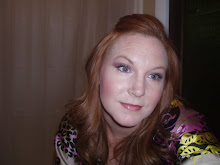

I saw this article on web MD and had to share it on my blog! I have always lived by these tips and so can you.
Shampoo, Shampoo Everywhere -- But Which One's Right for Your Hair?
WebMD's sud-savvy guide to the wild and wacky ingredients listed on shampoo labels.
By Liesa GoinsWebMD the Magazine - Feature
Reviewed by Karyn Grossman, MD
Price alone won't lead you to your shampoo soul mate:
A Consumer Reports study of 1,700 ponytail samples that had been washed with a range of products found that none of the expensive brands produced better results than drugstore options. Only trial and error can truly lead you to the right formula. "Whether it's $2 or $20, you just have to try it to see if a shampoo will work for you, says Ni'Kita Wilson, a cosmetic chemist for Cosmetech Laboratories in New Jersey.
But understanding shampoo-speak can help you stop pouring money down the drain. Here's a guide to the ingredients you'll find on the bottle:
Surfactants: alkyl monoglyceride, alkyl sulfosuccinate, ammonium lauryl sulfate, cocamidopropyl, cocamide DEA or MEA or TEA, cocamidopropyl betaine, distearyldimonium chloride, lauramide DEA, olealkonium chloride, sodium lauryl sulfate, sodium lauryl ether sulfate, tetrasodium EDTA
These are the cleaning power in shampoos. Often derived from coconut oil, palm kernel oil, or soybean oil, these cleansers lift the dirt, styling products, and scalp flakes that tend to stick to the sebum your scalp produces. Their unique molecular structure allows surfactants to surround oily substances so they can be rinsed away by water, Wilson explains.
Conditioners and moisturizers: amine oxide, citric acid, fatty alcohols (cetyl, oleyl, or stearyl alcohol), glycerin, isopropyl palmitate, lanolin, panthenol, polyquaternium, silicones, sodium dihydroxide, stearalkonium chloride
If surfactants are the workhorses, conditioners are the show ponies. These agents stay behind on strands. Some flatten the hair cuticle so hair feels smoother. Others deposit a lightweight coating for a silky texture, which aids in detangling.
Preservatives: DMDM hydantoin, guar, imidazolidinyl urea, iodopropynyl, isothiazolinone, sodium benzoate
"You need preservatives unless you want your shampoo to eventually walk out of the bathroom on its own, Wilson says. Many ingredients in the bottle are organic and can grow mold, fungus, yeast, and bacteria.
Other shampoo ingredients: alpha hydroxy acids, antioxidants, natural oils, proteins, vitamins
Hair is a dead fiber, so ingredients that work on skin won't have any prolonged benefit to your strands, Wilson says. Proteins will act as effective conditioners, but the benefits only last till your next shampoo -- they won't repair or restore hair.
What's the Best Shampoo for You?
Want to know the shampoo that will work best for your hair type? Here's what to look for on the label.
Oily hair: Astringents like tea tree oil, citrus oil, rosemary, sage, stinging nettle, and chamomile will help soak up oil in the follicle. Clear shampoos are often a better choice because they contain fewer conditioners that can leave a greasy residue.
Fine hair: Look for panthenol and other volumizing ingredients that help swell the hair shaft and proteins that adhere to individual strands to make them thicker.
Dry hair: The thick, opaque formulas are usually higher in rich moisturizers including nut oils, shea butter, and wheat germ oil that are especially good at bonding to parched strands.

No comments:
Post a Comment